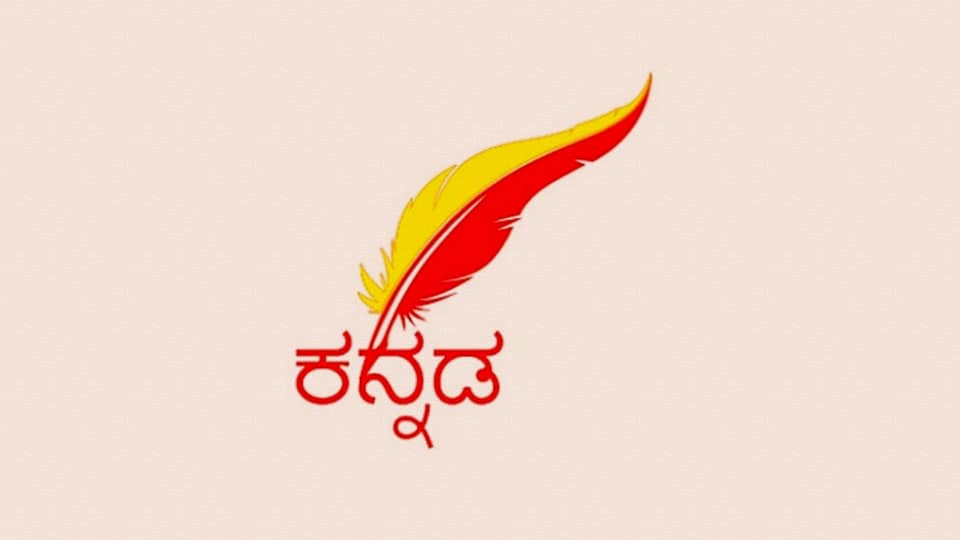By Dr. B. Shakira Jabeen
Kannada, a classical language, has a written history of 1,500 years. The spoken form is much older. Kannada has grown by borrowing vocabulary wherever necessary and by coining new terminology wherever possible. ‘Granthika’ is the standard /written form and there are many ‘vyavaharika’ or spoken forms.
The difference between ‘nudi’ and ‘baraha’, ‘bhasha’ and ‘boli’, ‘official’ and ‘non-official’ ultimately boil down to what is heard and what is read. The spoken form of the language indicates an individual’s geographic and socio-cultural identity. Spoken Kannada varies according to region, caste, class, age, gender, education, kind of school the person went to.
Sociolinguists see four broad varieties of Kannada — Mysore, Dharwad, Hydera-bad and Mangalore. Hassan, Mysore, Mandya, Moodusime, Nanjangud, Tiptur, Rabakavi, Sanketi, Halakki, Soliga, Devanga, Jenu Kuruba and Kodagu varieties are found in the Mysore area.
Within Mysore city, the Kannada of Saraswathipuram and Kuvempunagar differs from Paduvarahalli, Kumbarakoppal and Rammanahalli. 42 kilometres from Mysore is Mandya. The Kannada spoken in this township and district goes by the name Mandya Kannada which is very different from the official /standard variety. These mutually intelligible varieties are distinct in terms of tone, accent and vocabulary.
Kannada of the Dharwad area is believed to be the core / tirulgannada area. The influence of Marathi on Kannada is part historic and part geographic. Mangalore has multiple varieties of Kannada: Gowda Kannada, Udupi, Havyaka, Kundapra, Hebbar Kannada and Koraga with its varieties Onti, Tappu, Muda and Ande.
Kannada of Kalyana Karnat-aka has a vocabulary shaped by Urdu, Marathi and Telugu. Urdu has affected its sentence structure too. This area is home to the reformist movement — Vachana Chaluvali, which used the spoken language of the common man. There is a perception that the language of vachanas is the language of this region.
Karnataka Official Language Act, 1963
The official/standard/ panditara/ modernised Kannada is used in administration, literature and education. It emerged in the courts of Mummadi Krishnaraja Wadiyar in 1799. The Karnataka Official Language Act, 1963 doesn’t mention any variety as official.
Bandaya and Dalit movements posited various spoken varieties of Kannada on the centrestage. Writers and poets like Siddalingiah, Devanooru Mahadeva, Aravinda Malagatti and others have used literary idioms that are close to the hearts of Dalits in Karnataka. This style avoids pretentious Sanskrit expressions and abstractions wherever possible and favours racy, colloquial, idiomatic, and often rural expressions.
FM channel brought back radio into fashion and made Kannada a fashionable language. Non-Kannada youths are drawn to Kannada songs through FM. Urban youth is becoming multilingual and adding various language words to their Kannada. ‘like button otti’, and ‘subscribe maadlikke bell button otti’… are standard sentences on YouTube. The rules of grammar are loosened up in speech. Vocabulary from many languages is added to Kannada to enrich it.
Devanga, a weaving commu-nity, has a sizable presence in Bangalore, Basavapatna, Bagalkot, Chitradurga and Somwarpet. They are also called ‘Bilimagga’. They speak a distinct variety of Kannada. They tend to use a neutral gender for both men and women.
There are 200 Devanga households off Kodaikanal of Tamil Nadu who speak a variety of Kannada. Sanketi is another language variety with Tamil and Kannada features, written in Kannada. Kannada sign language is slowly emerging to accommodate all expressions. It has a pan-Karnataka application.
Stereotyping language communities
Cinema and television tend to stereotype language communities. Muslims don’t speak Kannada in the way it’s portrayed in films, nor do Mangaloreans. The difference in the use of certain vocabulary causing misunderstanding is more fiction than truth. Beyond this, if a speaker insists that the listener speak his variety of Kannada, it amounts up to linguistic chauvinism.
No variety of Kannada has linguistic features that automatically put it above other varieties. The official variety has its own domain in a multilingual space. Speaking that variety would elicit laughter outside its domain. Strangely all Kannada speakers understand all varieties of Kannada to a certain extent including the official variety. The structure or grammar of all varieties of Kannada is more or less the same, the basic difference is at the level of phonology, morphology, vocabulary and tone.
If the official/ standard variety emerges as the norm against which the other varieties get compared and found wanting, we can conclude that language is used as a tool to practise inequality. However, there has yet to be a circular by the Government to state what variety of Kannada to be used in official correspondence.
Non-Kannada speakers of Karnataka have managed to retain their mother-tongues at home. Konkani, Byary, Kodava and Urdu speakers maintain their home language irrespective of the language in school and market.
There are many more varieties of Kannadas/Kannadangal than we can imagine. Social groups, religious groups and tribes have their own variety of Kannada. There are formal and informal versions. No variety of Kannada is better than the other. Each variety has emerged out of the socio-cultural atmosphere over hundreds of years.
Agriculture, fishing, farming, navigation, education, power, caste, hegemony, exploitation and resistance have played a role in shaping the Kannada variety. Every variety is a cultural world. Ekikarana/ unification brought many languages and many varieties of Kannada together. Ekikarana and Kannada are world views. Tolerance, inclusion and coexistence in all spheres are the promise and responsibility of that idealistic worldview.
[The author is an alumnus of the Department of English, University of Mysore, Central Institute of English and Foreign Languages, Hyderabad and Kuvempu University, Shivamogga. She has presented papers at many national and international conferences and is a subject specialist in Sociolinguistics, Shivamogga. She has presented papers at many national and international conferences and is a subject specialist in sociolinguistics].








Recent Comments